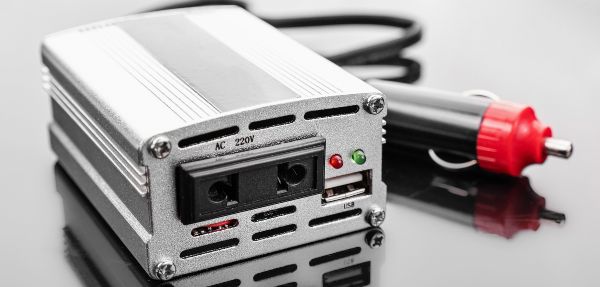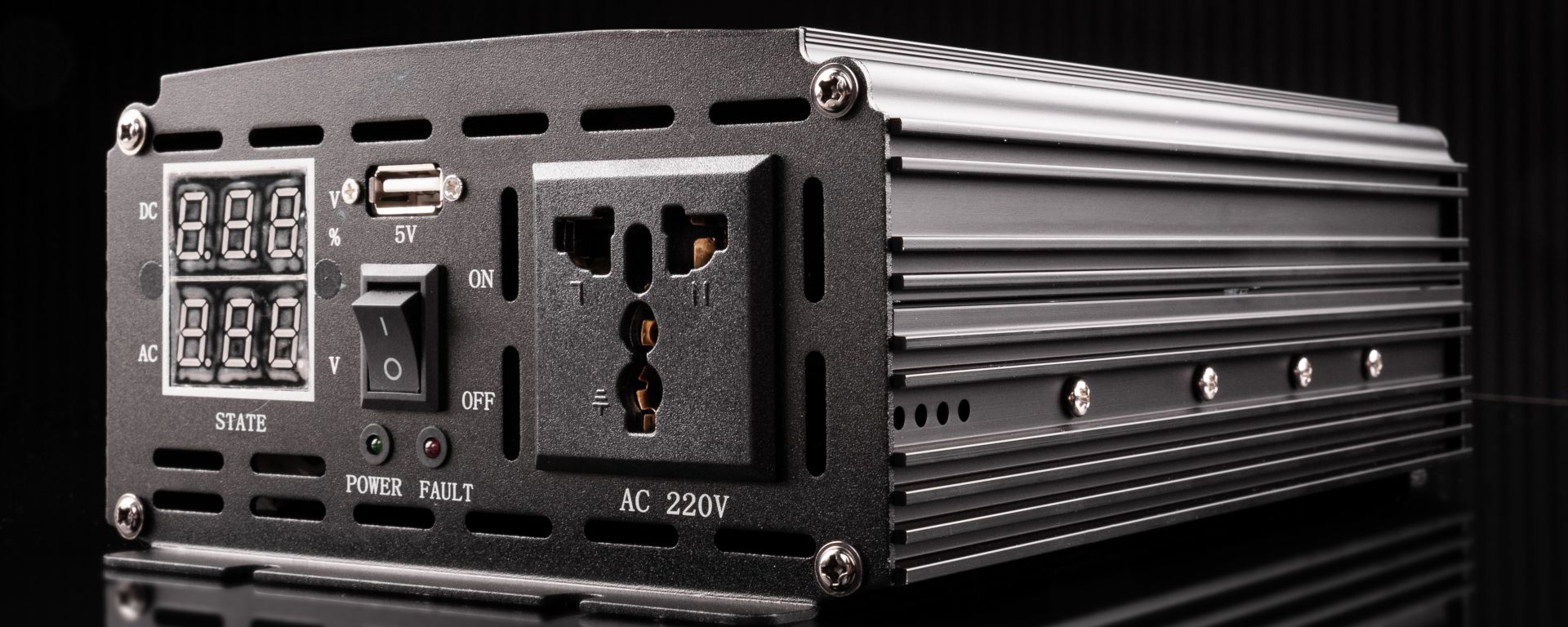As much as we don’t want to believe it, load shedding is here to stay for a while. With so many people being affected by darkness when power cuts occur, more and more are starting to invest in backup power systems. An inverter with a backup battery is one such system that is reasonably affordable and convenient. Another plus side of getting your hands on one of these is that you don’t have to deal with a loud, noisy generator to get through the power outages.
In this article, we at SweepSouth give you the complete guide on inverters, explaining what inverters are, how they work, and the different types of inverters you can get for load shedding.
What Is an Inverter?
An inverter is a unit that converts power from external batteries into electricity that can be used in our homes for our appliances. They work by converting DC stored in the battery into AC, meaning it converts a direct current into an alternate current to match up to the voltage requirements in your home. The AC power is fed into your home via the DB.
What Does an Inverter Do?
Inverters work with switching devices that are continuously turned off and on. The inverter feeds the pulse signal to the main coil of the transformer switches, on or off the DC input voltage. Fluctuating voltage in the main coil causes the alternating voltage in the secondary output winding. The transformer amplifies the voltage at a rate determined by the turn ratio.
This means, in most cases, it ranges from 12V to 230V AC. The most popular inverters are push-pull full bridge, half bridge, and pull-push with centre tap transformer. The last one is the most common as it’s simple to use and gives the best results, although it does use a heavier transformer.
Inverter Output Waves
Inverters are categorised according to their wave output form. There is the pure sine wave, the modified sine wave, and the square wave. The square wave is the cheapest and provides lower quality than the others. A modified wave is preferable, with improved power quality.
These are the best for use at home for your electronics. The best inverter waveform is the true sine wave. This is because it can be used for larger electronic appliances like medical equipment.
How Are Inverters Used?

Inverters are often installed in homes that are connected to the grid. Grid inverters convert the power from the nearest power station to your home to a voltage that is safe for use in the home. It’s important to consider the amount of electricity flowing into your home.
For instance, if your router runs on 15 volts, the 230 volts from Eskom need to be converted to make it safe to use. If more voltage than required is put into the device, it will burn from the inside. This is why inverters are a crucial element in power supply systems.
Inverters are used in UPSs, solar systems, switched-mode power supplies, and standalone devices.
Inverter for Load Shedding
The only backup power that doesn’t require an inverter is a UPS. Uninterruptible power sources aren’t made to supply backup power, but rather to protect your electronic devices from power surges. They do still house a built-in inverter, though.
A UPS can provide up to 4 hours of power to small devices like laptops, depending on their size. But it won’t be able to power larger appliances such as the TV, fridge, and kettle. Fortunately, other options can last for longer and provide you with more usable energy.
Types of Backup Power Systems That Require Inverters
All power systems need inverters, but when buying a backup power supply system like an inverter for load shedding, it’s important to understand the types of systems that are available and what will work best for your needs.
Different systems have benefits, downfalls, power capabilities, and length of supply. Let’s take a look at the top backup solutions requiring inverters.
Solar Panel Backup Systems

Solar systems often include grid-tied inverters, depending on the chosen type of solar system. If you go completely off the grid with a solar system, you’ll need a solar inverter for the job. These inverters convert the solar energy collected from the solar panels into usable energy for your office or home.
A grid-tied solar system supplements your power supply with solar energy during the day when the sun is shining. If you add a solar battery, the energy can be stored for later use. Most systems have solar batteries, but you can also choose to build a whole battery bank.
Backup Battery or Powerbank
Another option is to buy a battery that connects to your inverter to supply you with power. The type of batteries you choose will determine what can be powered and for how long. Here you can store harvested power for use during load shedding. If you need a fair amount of electricity, for larger homes, or to provide power to businesses, then batteries are what you need for more capacity.
These batteries are similar to car batteries, you will need enough power to keep all of your essential devices switched on.
What Size Backup Power Supply Do You Need?
The size depends on what you need to power. You can work it out by adding all the power requirements for each electronic device together. Make sure to differentiate between essentials, low consumption, or heavy-duty items such as stoves, geysers, pool pumps, and kettles.
Conclusion
After adding the power requirements for everything you need to remain running during load shedding, compare it to the backup power device’s capacity. Your power requirements should be less than the power rating of the backup power supply that you buy. Additionally, before making a sure decision, you might want to read about UPS solutions for load shedding.
If you’re struggling to find the time to keep a clean home in between a busy schedule, amplified by the power outage woes of the country, SweepSouth is your go-to home services platform. When you book a SweepSouth cleaning service, you’ll experience the difference a spotless home can make, at the hands of an experienced and vetted cleaning professional. Trust SA’s #1 home services brand to transform your home, like only we know how.









